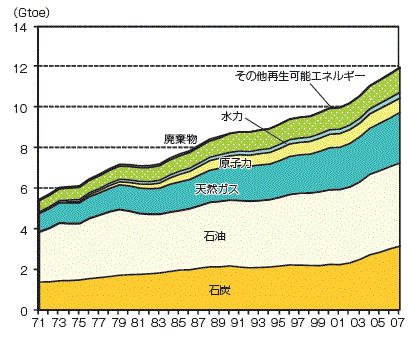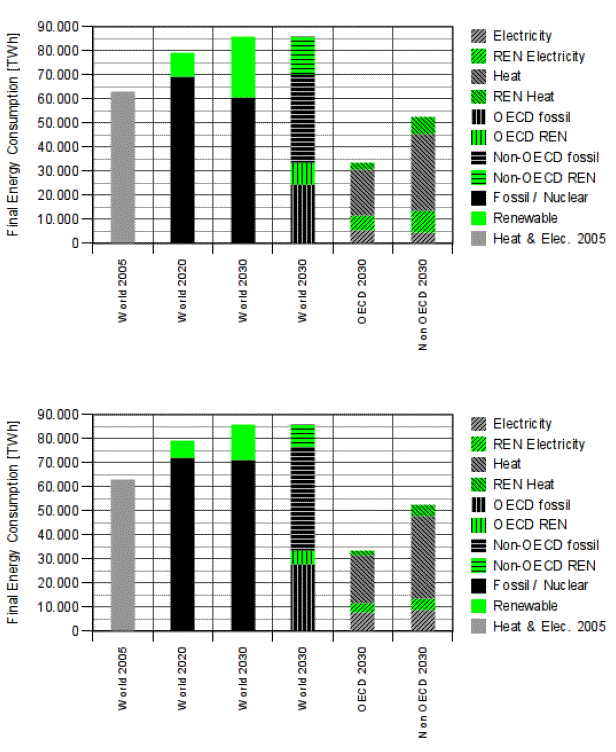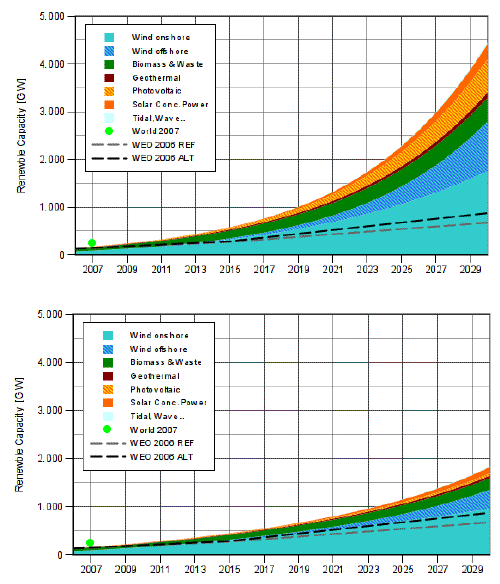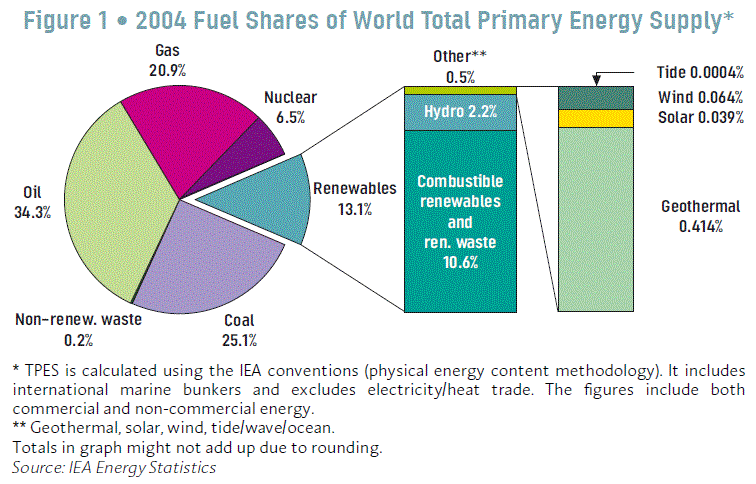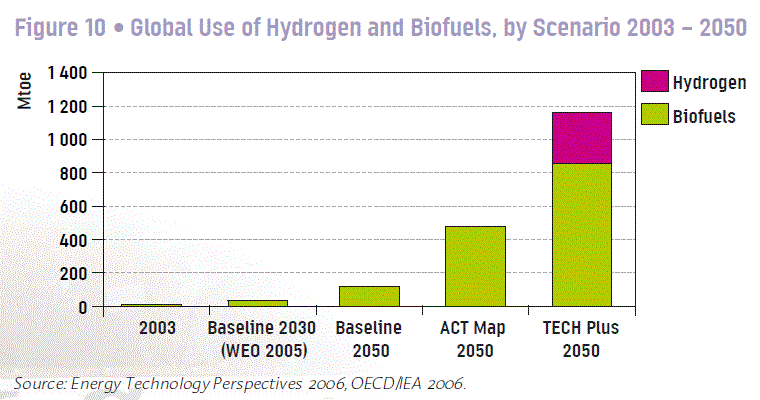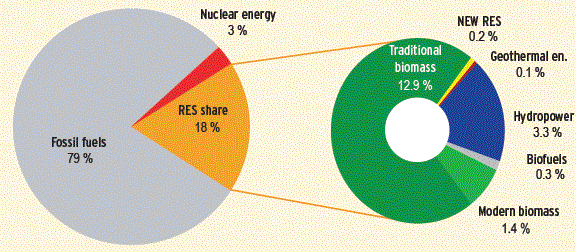
Structure of global final energy consumption, 2006
The global final energy share is higher than the global primary
energy share. This is partly due to traditional biomass,
all of which represents final energy consumption. Furthermore,
the level of primary energy share also depends on the method
used to calculate the primary energy equivalent of renewable
energy sources, cf. Appendix, para 5, 11 and 12.
New RES = Wind, solar and ocean energy Source: according to REN21
[33]
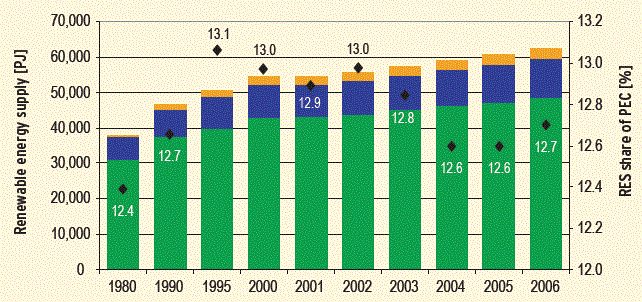

Global development of renewable primary energy supply and
share of renewable energy sources (RES)
1) Only includes the renewable portion of waste. On calculation
of the RES share, cf. also Appendix, para 12. Sources: IEA [31],
[54]
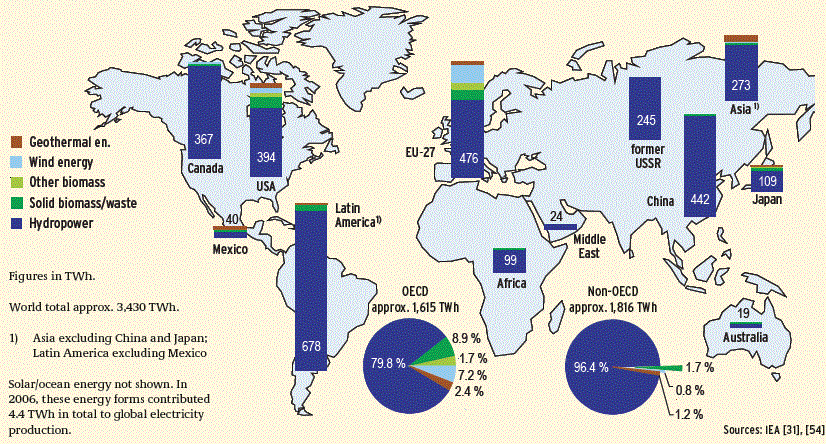
Electricity generation from renewable energy sources in various
regions, 2006
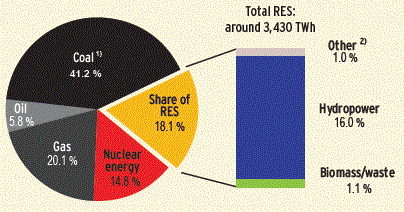
Share of renewable energy sources in global electricity generation,
2006
At 16 %, global electricity generation from
hydropower is higher than that from nuclear energy (14.8 %).
Looking at the PEC shares, this ratio is inverted, with nuclear
energy providing a considerably higher share of PEC at 6.2 %
than hydropower at 2.2 %. The reason for this distortion is that
according to international agreements, electricity from uclear
power is rated at an average conversion effi ciency of 33 % in
relation to primary energy, while electricity from hydropower
is rated at a conversion effi ciency of 100 % according to the
so-called physical energy content method; cf. Appendix, para.
5. 1) Includes non-renewable portion of waste (0.2 %).
2) Geothermal energy, solar energy, wind energy, ocean energy.
Sources: IEA [31], [54]
Federal Ministry for the Environment, Nature Conservation
and Nuclear Safety (BMU)(2009)による『Renewable
Energy Sources in Figures National and International Development』から |

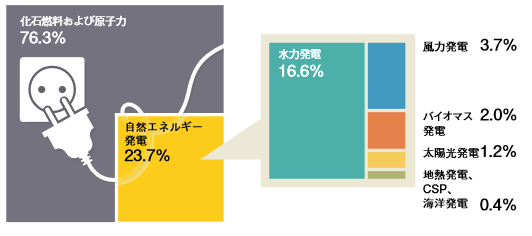
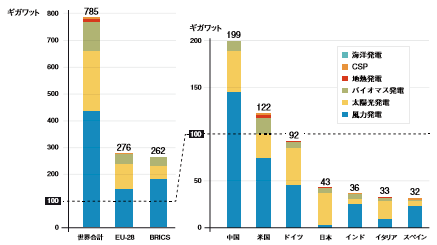
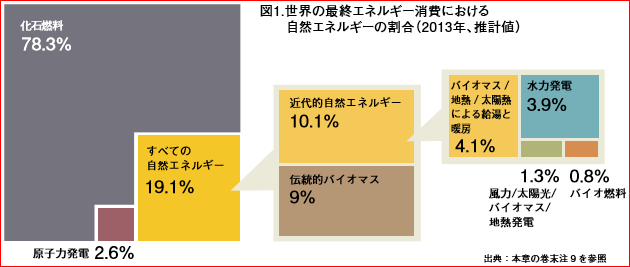
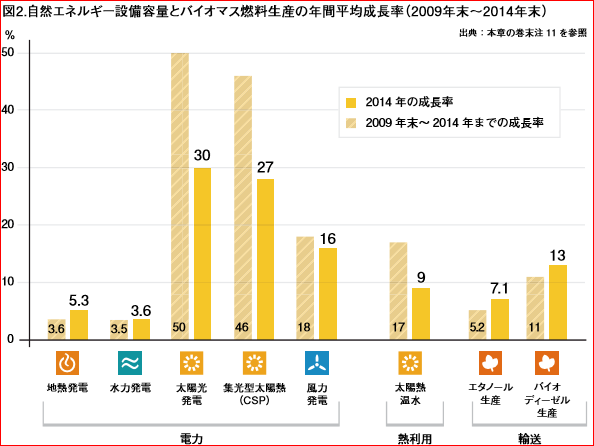


/Image1775.gif)
/Image1776.gif)
/Image1777.gif)
/Image1778.gif)
/Image1760.gif)
/Image1761.gif)
/Image1763.gif)
/Image1762.gif)
/Image1764.gif)
/Image1765.gif)
/Image1766.gif)
/Image1768.gif)
/Image1767.gif)
/Image1298.gif)
/Image1299.gif)
/Image2859.gif)
/Image2860.gif)
/Image2861.gif)
/Image2863.gif)
/Image2862.gif)
/Image2762.gif)
/Image2764.gif)
/Image2765.gif)
/Image2588.gif)
/Image2591.gif)
/Image2590.gif)
/Image2589.gif)
/Image2652.gif)
/Image2653.gif)
/Image2655.gif)
/Image2004.gif)
/Image2654.gif)
/Image2584.gif)
/Image752.gif)
/Image754.gif)
/Image755.gif)
/Image756.gif)
/Image765.gif)

